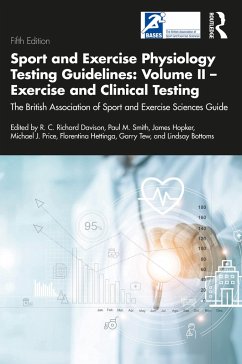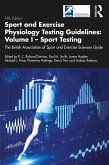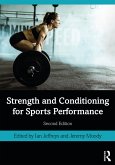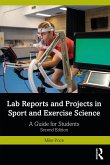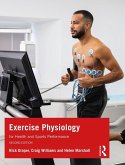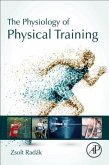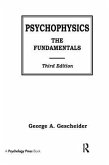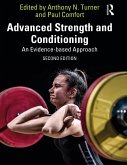Sport and Exercise Physiology Testing Guidelines
Volume II - Exercise and Clinical Testing: The British Association of Sport and Exercise Sciences Guide
Herausgeber: Davison, R. C. Richard; Hopker, James; Smith, Paul
Sport and Exercise Physiology Testing Guidelines
Volume II - Exercise and Clinical Testing: The British Association of Sport and Exercise Sciences Guide
Herausgeber: Davison, R. C. Richard; Hopker, James; Smith, Paul
- Broschiertes Buch
- Merkliste
- Auf die Merkliste
- Bewerten Bewerten
- Teilen
- Produkt teilen
- Produkterinnerung
- Produkterinnerung
This book is a comprehensive guide to the protocols and issues in physiological testing. With contributions from physiologists and clinicians, covering a range of physiologically based tests to assess and monitor conditions, this volume is essential for clinical-specific exercise testing in research and applied settings.
Andere Kunden interessierten sich auch für
![Sport and Exercise Physiology Testing Guidelines Sport and Exercise Physiology Testing Guidelines]() Sport and Exercise Physiology Testing Guidelines110,99 €
Sport and Exercise Physiology Testing Guidelines110,99 €![Strength and Conditioning for Sports Performance Strength and Conditioning for Sports Performance]() Strength and Conditioning for Sports Performance97,99 €
Strength and Conditioning for Sports Performance97,99 €![Lab Reports and Projects in Sport and Exercise Science Lab Reports and Projects in Sport and Exercise Science]() Mike Price (UK Coventry University)Lab Reports and Projects in Sport and Exercise Science79,99 €
Mike Price (UK Coventry University)Lab Reports and Projects in Sport and Exercise Science79,99 €![Exercise Physiology Exercise Physiology]() Nick Draper (New Zealand University of Canterbury)Exercise Physiology47,99 €
Nick Draper (New Zealand University of Canterbury)Exercise Physiology47,99 €![The Physiology of Physical Training The Physiology of Physical Training]() Zsolt RadákThe Physiology of Physical Training156,99 €
Zsolt RadákThe Physiology of Physical Training156,99 €![Psychophysics Psychophysics]() George A. GescheiderPsychophysics49,99 €
George A. GescheiderPsychophysics49,99 €![Advanced Strength and Conditioning Advanced Strength and Conditioning]() Advanced Strength and Conditioning60,99 €
Advanced Strength and Conditioning60,99 €-
-
-
This book is a comprehensive guide to the protocols and issues in physiological testing. With contributions from physiologists and clinicians, covering a range of physiologically based tests to assess and monitor conditions, this volume is essential for clinical-specific exercise testing in research and applied settings.
Hinweis: Dieser Artikel kann nur an eine deutsche Lieferadresse ausgeliefert werden.
Hinweis: Dieser Artikel kann nur an eine deutsche Lieferadresse ausgeliefert werden.
Produktdetails
- Produktdetails
- Verlag: Taylor & Francis Ltd
- 2 ed
- Seitenzahl: 344
- Erscheinungstermin: 14. März 2022
- Englisch
- Abmessung: 234mm x 156mm x 19mm
- Gewicht: 574g
- ISBN-13: 9780367489847
- ISBN-10: 0367489848
- Artikelnr.: 62569798
- Herstellerkennzeichnung
- Libri GmbH
- Europaallee 1
- 36244 Bad Hersfeld
- gpsr@libri.de
- Verlag: Taylor & Francis Ltd
- 2 ed
- Seitenzahl: 344
- Erscheinungstermin: 14. März 2022
- Englisch
- Abmessung: 234mm x 156mm x 19mm
- Gewicht: 574g
- ISBN-13: 9780367489847
- ISBN-10: 0367489848
- Artikelnr.: 62569798
- Herstellerkennzeichnung
- Libri GmbH
- Europaallee 1
- 36244 Bad Hersfeld
- gpsr@libri.de
R.C. Richard Davison, PhD, FBASES, CSci, is Professor of Exercise Physiology in the School of Health and Life Sciences at the University of the West of Scotland, UK. Paul M. Smith, PhD, FBASES, FHEA, is Senior Lecturer in Exercise Physiology in the School of Sport and Health Sciences at Cardiff Metropolitan University, UK. James Hopker, PhD, is Professor of Sport and Exercise Science and Deputy Director of the Division of Natural Sciences at the University of Kent, UK. Michael J. Price, PhD, FBASES, is Reader in Exercise Physiology at Coventry University, UK. Florentina Hettinga, PhD, FACSM, FECSS, SFHEA, is Professor of Sport, Exercise and Rehabilitation and Director of Research and Knowledge Exchange of the Department of Sport, Exercise and Rehabilitation at Northumbria University, UK. Garry Tew, PhD, FBASES, FHEA, is Professor of Clinical Exercise Science in the Department of Sport, Exercise and Rehabilitation at Northumbria University, UK. Lindsay Bottoms, PhD, FBASES, is Reader in Exercise and Health Physiology at the University of Hertfordshire, UK, and the Director of the Research Centre for Psychology and Sports Sciences.
Introduction
Part 1
1.1 Professional Competency and Working with Others
1.2: Physiological Exercise Testing: Ethical Considerations
1.3: Health and Safety in Duty of Care: Evaluating and Stratifying Risk
1.4: Safeguarding in Physiological Testing
1.5: Influence of Medication on Typical Exercise Response
Part 2
2.1: Data Intelligence and Feedback in a Clinical Context
2.2: Reliability and Measurement Error
2.3 Scaling: Adjusting Physiological and Performance Measures to Body Size
Part 3
3.1: Participant Pre-test Preparation and Evaluation
3.2: Maintenance and Calibration Standards: A Cornerstone of Laboratory
Quality Assurance
3.3: Lung and Respiratory Muscle Function
3.4: Surface Anthropometry
3.5: Functional Screening
3.6: Assessment of Free-living Energy Expenditure
3.7: Respiratory Gas Analysis
3.8: Metabolic Threshold Testing: Interpretation and Prognostic
Prescriptive Value
3.9: Ratings of Perceived Exertion
3.10: Clinical Strength Testing
3.11: Blood Sampling
3.12: Field Based Assessments for Determining Aerobic Fitness and Exercise
Prescription
3.13: Quantifying Free-living Physical Activity and Sedentary Behaviours in
Adults
3.14: Musculoskeletal Assessment
Part 4
4.1: Assessment of Peripheral Blood Flow and Vascular Function
4.2: Application of Dual Energy X-ray Absorptiometry
4.3: Assessment of Cardiac Structure and Function
4.4: Methods in Exercise Immunology
4.5: Skeletal Muscle Biopsy: Techniques and Applications
Part 5
5.1: Exercise Testing in Obesity
5.2: Exercise Testing in Cardiovascular Disease
5.3: Exercise Testing in Diabetes
5.4: Exercise Testing in Chronic Kidney Disease
5.5: Exercise Testing in Chronic Lung Disease
5.6: Exercise Testing in Breast and Prostate Cancer
5.7: Exercise Testing in Peripheral Arterial Disease
5.8: Exercise Testing in Children
5.9: Exercise Testing in Older Adults
5.10: Exercise Testing in Females
5.11: Exercise Testing in Pregnancy
5.12: Exercise Testing in Heart Failure
Part 1
1.1 Professional Competency and Working with Others
1.2: Physiological Exercise Testing: Ethical Considerations
1.3: Health and Safety in Duty of Care: Evaluating and Stratifying Risk
1.4: Safeguarding in Physiological Testing
1.5: Influence of Medication on Typical Exercise Response
Part 2
2.1: Data Intelligence and Feedback in a Clinical Context
2.2: Reliability and Measurement Error
2.3 Scaling: Adjusting Physiological and Performance Measures to Body Size
Part 3
3.1: Participant Pre-test Preparation and Evaluation
3.2: Maintenance and Calibration Standards: A Cornerstone of Laboratory
Quality Assurance
3.3: Lung and Respiratory Muscle Function
3.4: Surface Anthropometry
3.5: Functional Screening
3.6: Assessment of Free-living Energy Expenditure
3.7: Respiratory Gas Analysis
3.8: Metabolic Threshold Testing: Interpretation and Prognostic
Prescriptive Value
3.9: Ratings of Perceived Exertion
3.10: Clinical Strength Testing
3.11: Blood Sampling
3.12: Field Based Assessments for Determining Aerobic Fitness and Exercise
Prescription
3.13: Quantifying Free-living Physical Activity and Sedentary Behaviours in
Adults
3.14: Musculoskeletal Assessment
Part 4
4.1: Assessment of Peripheral Blood Flow and Vascular Function
4.2: Application of Dual Energy X-ray Absorptiometry
4.3: Assessment of Cardiac Structure and Function
4.4: Methods in Exercise Immunology
4.5: Skeletal Muscle Biopsy: Techniques and Applications
Part 5
5.1: Exercise Testing in Obesity
5.2: Exercise Testing in Cardiovascular Disease
5.3: Exercise Testing in Diabetes
5.4: Exercise Testing in Chronic Kidney Disease
5.5: Exercise Testing in Chronic Lung Disease
5.6: Exercise Testing in Breast and Prostate Cancer
5.7: Exercise Testing in Peripheral Arterial Disease
5.8: Exercise Testing in Children
5.9: Exercise Testing in Older Adults
5.10: Exercise Testing in Females
5.11: Exercise Testing in Pregnancy
5.12: Exercise Testing in Heart Failure
Introduction
Part 1
1.1 Professional Competency and Working with Others
1.2: Physiological Exercise Testing: Ethical Considerations
1.3: Health and Safety in Duty of Care: Evaluating and Stratifying Risk
1.4: Safeguarding in Physiological Testing
1.5: Influence of Medication on Typical Exercise Response
Part 2
2.1: Data Intelligence and Feedback in a Clinical Context
2.2: Reliability and Measurement Error
2.3 Scaling: Adjusting Physiological and Performance Measures to Body Size
Part 3
3.1: Participant Pre-test Preparation and Evaluation
3.2: Maintenance and Calibration Standards: A Cornerstone of Laboratory
Quality Assurance
3.3: Lung and Respiratory Muscle Function
3.4: Surface Anthropometry
3.5: Functional Screening
3.6: Assessment of Free-living Energy Expenditure
3.7: Respiratory Gas Analysis
3.8: Metabolic Threshold Testing: Interpretation and Prognostic
Prescriptive Value
3.9: Ratings of Perceived Exertion
3.10: Clinical Strength Testing
3.11: Blood Sampling
3.12: Field Based Assessments for Determining Aerobic Fitness and Exercise
Prescription
3.13: Quantifying Free-living Physical Activity and Sedentary Behaviours in
Adults
3.14: Musculoskeletal Assessment
Part 4
4.1: Assessment of Peripheral Blood Flow and Vascular Function
4.2: Application of Dual Energy X-ray Absorptiometry
4.3: Assessment of Cardiac Structure and Function
4.4: Methods in Exercise Immunology
4.5: Skeletal Muscle Biopsy: Techniques and Applications
Part 5
5.1: Exercise Testing in Obesity
5.2: Exercise Testing in Cardiovascular Disease
5.3: Exercise Testing in Diabetes
5.4: Exercise Testing in Chronic Kidney Disease
5.5: Exercise Testing in Chronic Lung Disease
5.6: Exercise Testing in Breast and Prostate Cancer
5.7: Exercise Testing in Peripheral Arterial Disease
5.8: Exercise Testing in Children
5.9: Exercise Testing in Older Adults
5.10: Exercise Testing in Females
5.11: Exercise Testing in Pregnancy
5.12: Exercise Testing in Heart Failure
Part 1
1.1 Professional Competency and Working with Others
1.2: Physiological Exercise Testing: Ethical Considerations
1.3: Health and Safety in Duty of Care: Evaluating and Stratifying Risk
1.4: Safeguarding in Physiological Testing
1.5: Influence of Medication on Typical Exercise Response
Part 2
2.1: Data Intelligence and Feedback in a Clinical Context
2.2: Reliability and Measurement Error
2.3 Scaling: Adjusting Physiological and Performance Measures to Body Size
Part 3
3.1: Participant Pre-test Preparation and Evaluation
3.2: Maintenance and Calibration Standards: A Cornerstone of Laboratory
Quality Assurance
3.3: Lung and Respiratory Muscle Function
3.4: Surface Anthropometry
3.5: Functional Screening
3.6: Assessment of Free-living Energy Expenditure
3.7: Respiratory Gas Analysis
3.8: Metabolic Threshold Testing: Interpretation and Prognostic
Prescriptive Value
3.9: Ratings of Perceived Exertion
3.10: Clinical Strength Testing
3.11: Blood Sampling
3.12: Field Based Assessments for Determining Aerobic Fitness and Exercise
Prescription
3.13: Quantifying Free-living Physical Activity and Sedentary Behaviours in
Adults
3.14: Musculoskeletal Assessment
Part 4
4.1: Assessment of Peripheral Blood Flow and Vascular Function
4.2: Application of Dual Energy X-ray Absorptiometry
4.3: Assessment of Cardiac Structure and Function
4.4: Methods in Exercise Immunology
4.5: Skeletal Muscle Biopsy: Techniques and Applications
Part 5
5.1: Exercise Testing in Obesity
5.2: Exercise Testing in Cardiovascular Disease
5.3: Exercise Testing in Diabetes
5.4: Exercise Testing in Chronic Kidney Disease
5.5: Exercise Testing in Chronic Lung Disease
5.6: Exercise Testing in Breast and Prostate Cancer
5.7: Exercise Testing in Peripheral Arterial Disease
5.8: Exercise Testing in Children
5.9: Exercise Testing in Older Adults
5.10: Exercise Testing in Females
5.11: Exercise Testing in Pregnancy
5.12: Exercise Testing in Heart Failure

